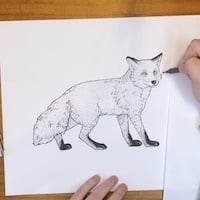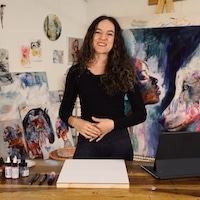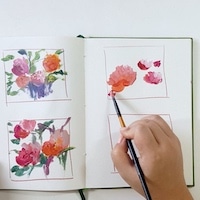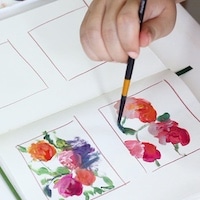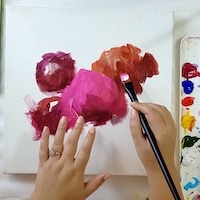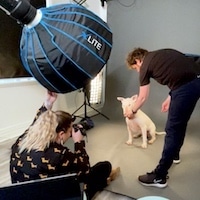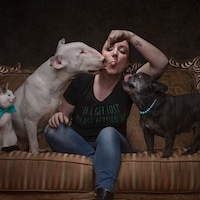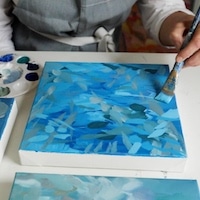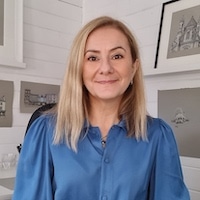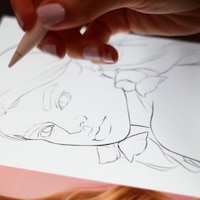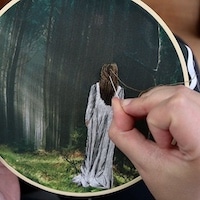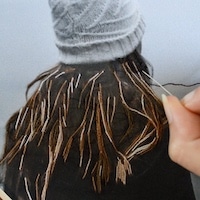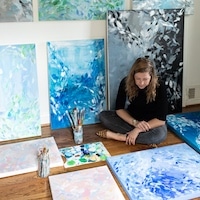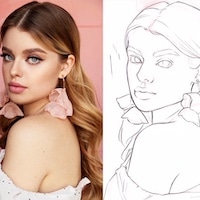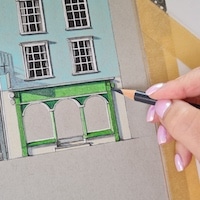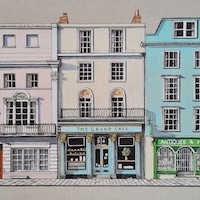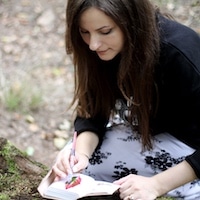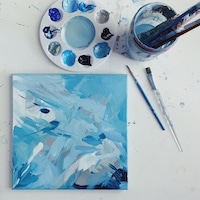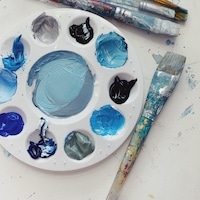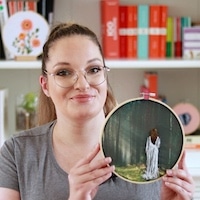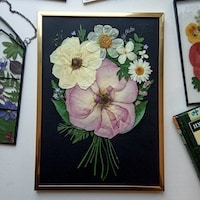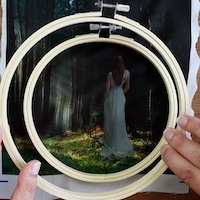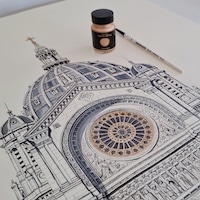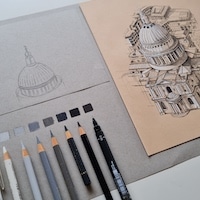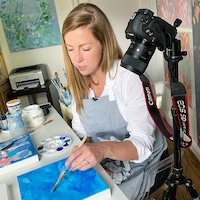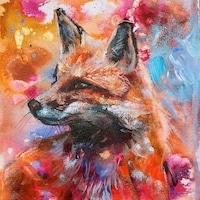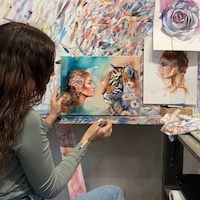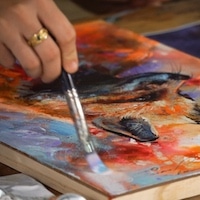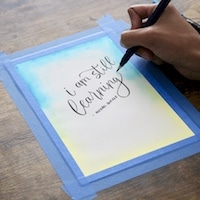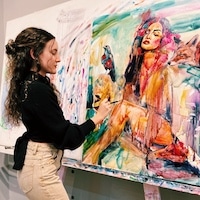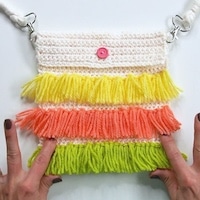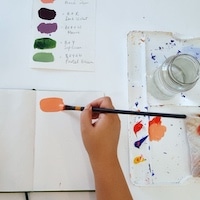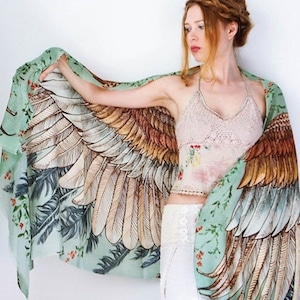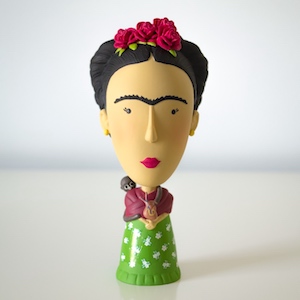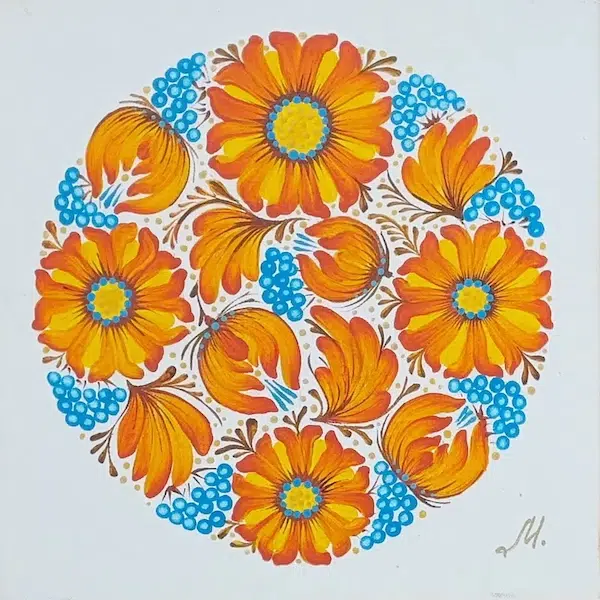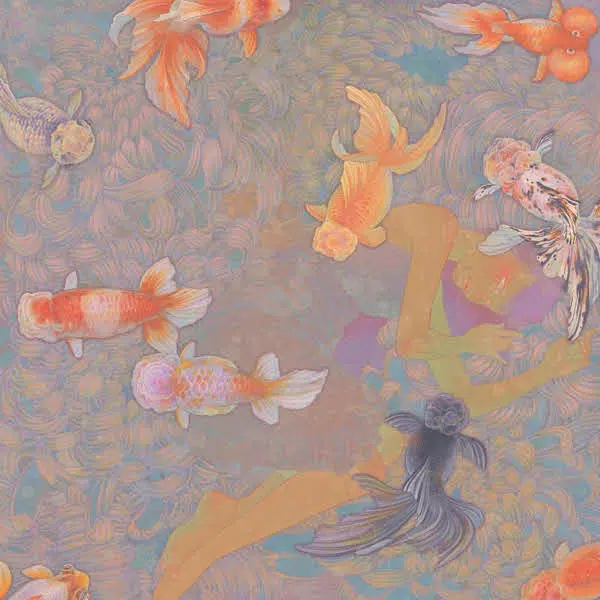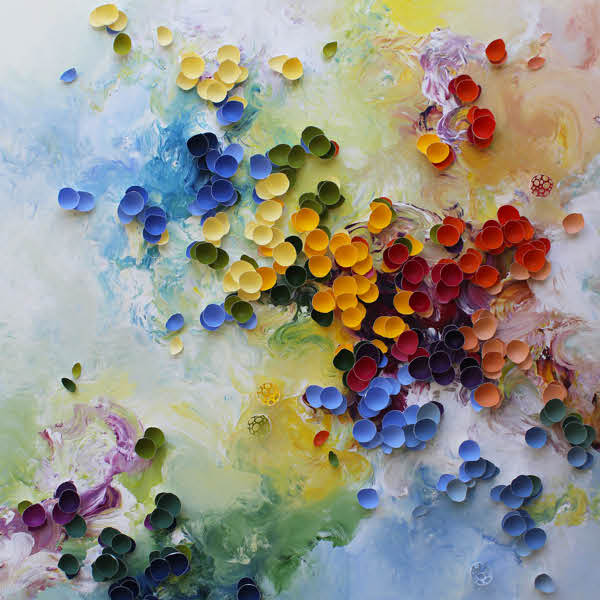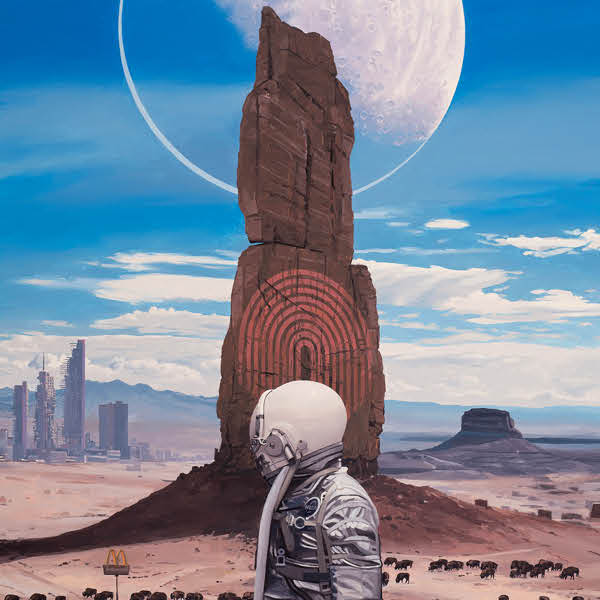
There is beauty in repetition. Seeing the same motif produced again and again is like a symphony of form. And while it’s satisfying to see carbon copies, it’s perhaps more compelling when created by the human hand. As hard as we may try, a pattern drawn by hand will never be completely perfect—and that’s part of its charm. Artist Shane Drinkwater creates works on paper that are replete with repeats. He uses dots, plus signs, arrows, and straight lines to form structured compositions that read like maps and diagrams of worlds we don’t yet fully understand.
For Tasmanian-born Drinkwater, there is joy in applying color, shape, and gesture on the surface of paper. “I’m interested in the ‘making!’” he says. “I delve into the act of painting with a minimum repertoire of visual elements aiming for a maximum visual intensity. Ideas and images appear through the making of the work, language becomes unnecessary, I let the work speak for me.”
What is the work trying to say? It seems largely up to the viewer to decipher the meaning. Drinkwater intends for his pieces to “read as mysterious coded systems.” Some works look like topographical maps, relaying a landscape of a place unknown. Others seem to chart distant universes and diagrams of shooting stars or meteors. In this case, it’s what we bring to the work that matters. How we relate to the shapes and symbols directly informs how we understand what we’re seeing.
Regardless of what they are or where they lead us, each piece is executed in Drinkwater’s visual language: a limited color palette of blue, red, black, white, and yellow on paper, characterized by measured mark-making that is maximalist without being overwhelming to the eye. In that way, they all exist in the same universe, helping us chart the path of Drinkwater’s artistic mind.
For more from the artist, you can follow Shane Drinkwater on Instagram.
Artist Shane Drinkwater creates works on paper that are replete with repeats.

He uses dots, plus signs, arrows, and straight lines to form structured compositions that read like maps and diagrams of worlds we don’t yet fully understand.


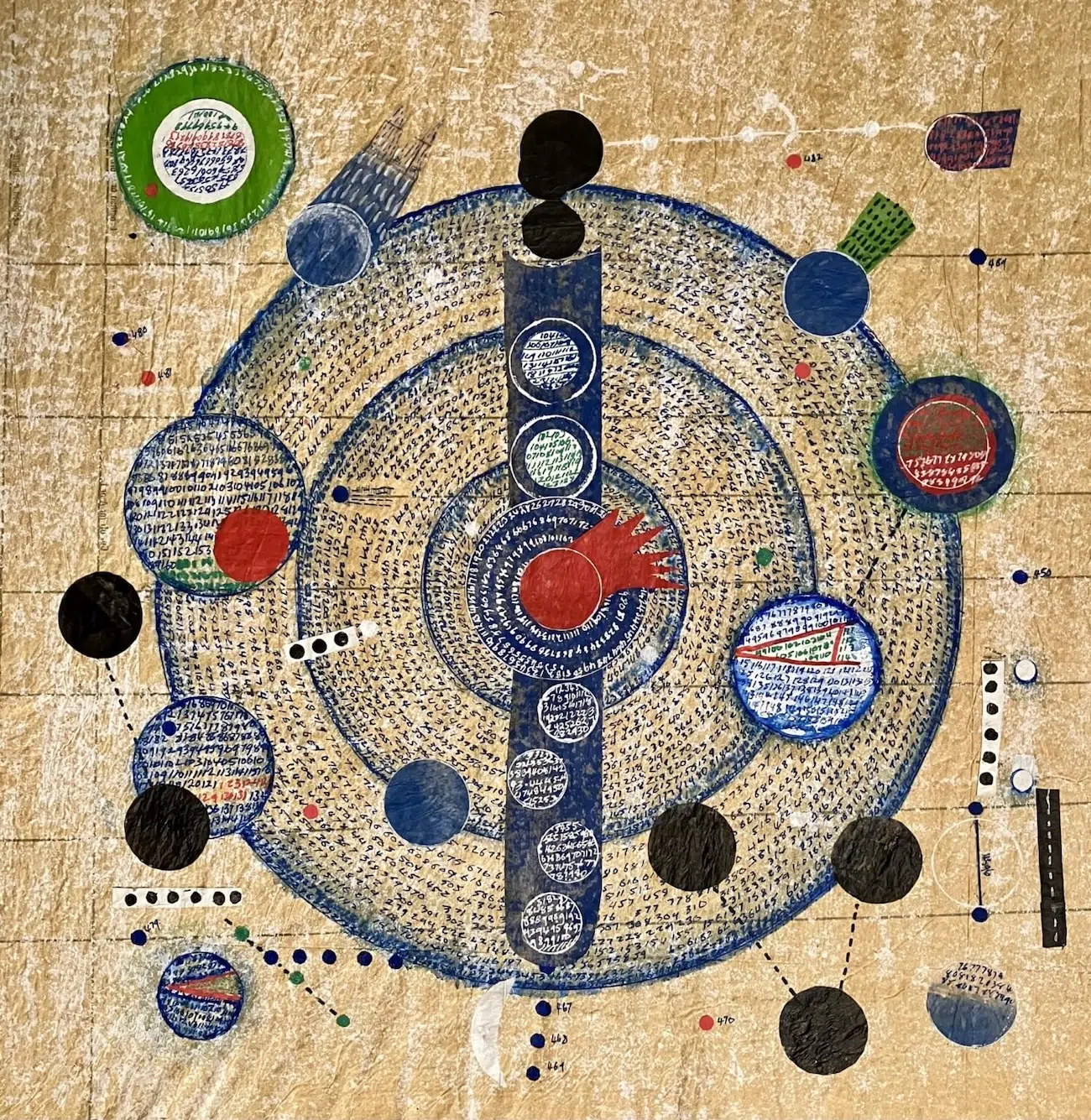
For Tasmanian-born Drinkwater, there is joy in applying color, shape, and gesture on the surface of paper.



“I delve into the act of painting with a minimum repertoire of visual elements aiming for a maximum visual intensity. Ideas and images appear through the making of the work, language becomes unnecessary, I let the work speak for me.”


Drinkwater intends for his pieces to “read as mysterious coded systems.”
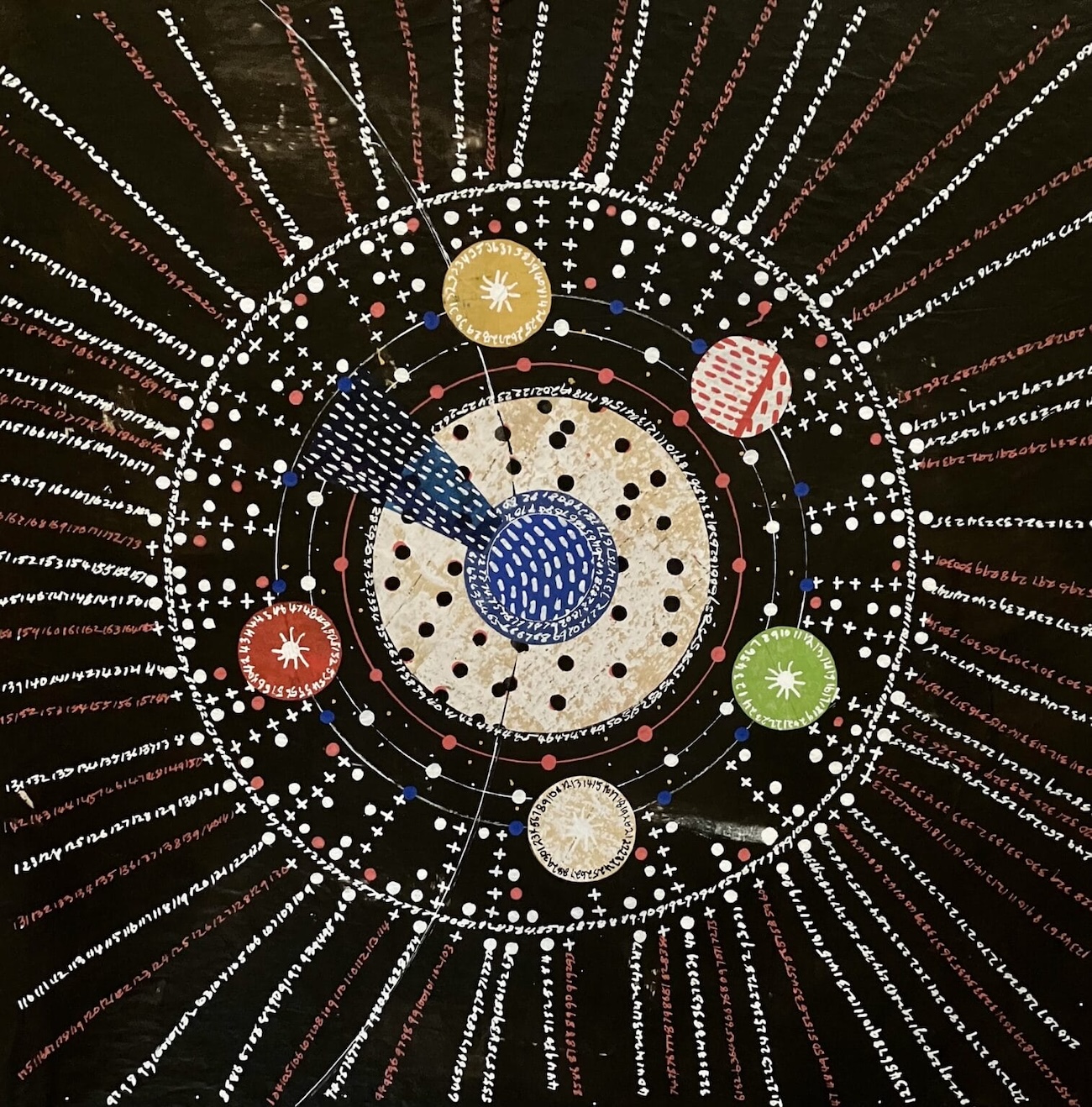

Some works look like topographical maps, relaying a landscape of a place unknown.


Others seem to chart distant universes and diagrams of shooting stars or meteors.







